Decoding Your Dog’s Licks: What They’re *Really* Trying to Tell You
Over the years, I’ve seen just about every kind of dog behavior you can imagine. I’ll never forget one case involving a sweet German Shepherd whose licking was more than just a friendly hello. It was constant. He’d lick his owner’s hands, the sofa, the floor, and his own paws until they were irritated and raw. His person thought it was just over-the-top affection, but honestly, it was a clear sign of a dog in distress. It turned out to be a tricky mix of skin allergies and some serious separation anxiety.
In this article
That situation perfectly captures a point I find myself making all the time: a dog’s lick is never just a lick. It’s a rich form of communication, a little piece of a much larger puzzle.
So many people ask, “Why does my dog lick me?” and they’re usually hoping for the simple answer: “Because he loves you!” And while affection is definitely a huge part of it, the real story is so much more interesting. Figuring it out isn’t just for curiosity’s sake. It helps you connect with your dog on a whole new level and spot when they’re happy, stressed, or even in pain. My goal here is to give you the inside scoop, so you can start reading your dog’s signals with confidence.
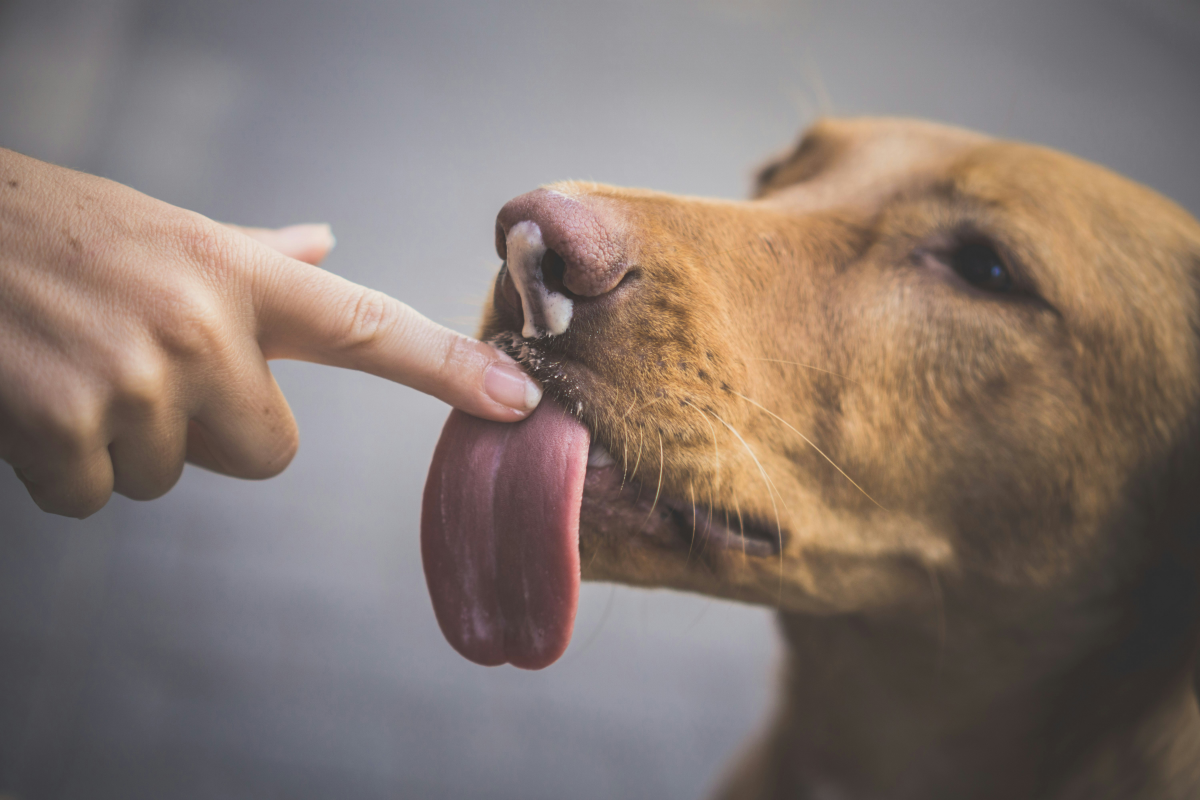
It All Starts with Instinct
To really get why your dog is slobbering on your hand right now, we have to look way back at their wild ancestors. In a wolf pack, licking is a fundamental social skill. Pups lick their mother’s face to get her to regurgitate food, which is their first meal besides milk. This early experience wires their brain to think: licking = good things happen.
As they grow up, licking takes on new meanings. It becomes a gesture of respect. A lower-ranking wolf might lick a dominant member’s muzzle to say, “Hey, I’m cool, no threat here.” It’s a vital tool for keeping the peace in the pack.
Now, your dog doesn’t think you’re an “alpha wolf”—that’s a pretty outdated concept. But they absolutely see you as the center of their social world. So when your dog licks you, they’re often tapping into that ancient instinct. They’re saying, “I respect you, I depend on you, and you’re part of my crew.” It’s a social glue that has worked for canines for a very long time.
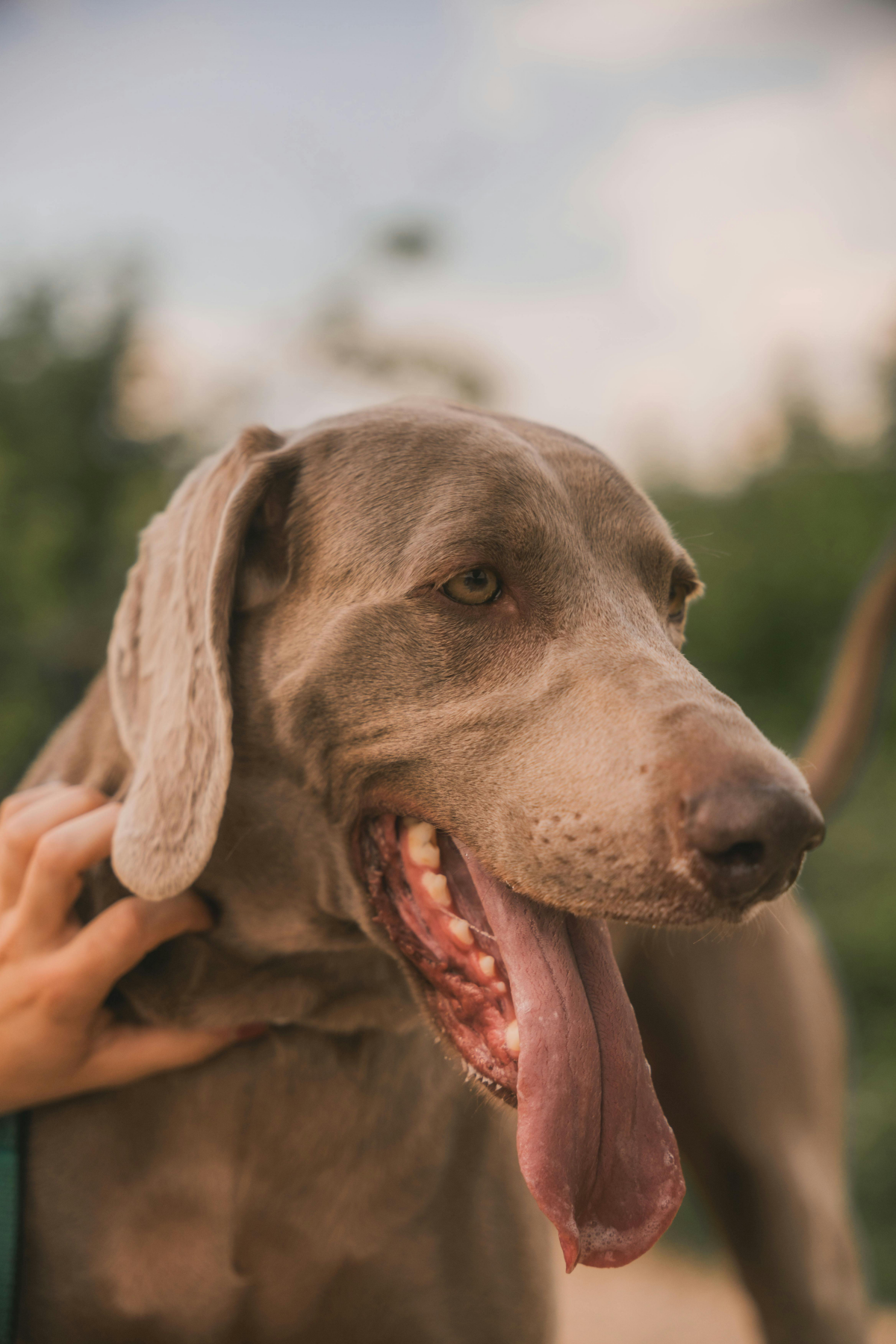
The Science of a Slurp
There’s actually some fascinating chemistry going on when a dog licks you. The act itself releases endorphins in their brain, which are natural feel-good chemicals that create a sense of calm. It’s a self-soothing tool. This is why a little licking is perfectly normal, but non-stop licking can be a sign a dog is trying to dial down their own anxiety. It’s their way of coping.
And guess what? It works for us, too. Receiving that kind of affection can lower our own stress hormones and boost oxytocin (the “love hormone”). It’s a win-win that strengthens your bond.
But that’s not all. A dog’s tongue is also a powerful data-collection device. They have a special organ on the roof of their mouth (the vomeronasal organ, if you want to get technical) that helps them analyze scents and tastes on a whole other level. When they lick you, they’re gathering information. They can taste the salt on your skin, the lotion you used, and even faint traces of the sandwich you had for lunch. It’s how they learn about your health, your mood, and where you’ve been. It’s way more detailed than a handshake!
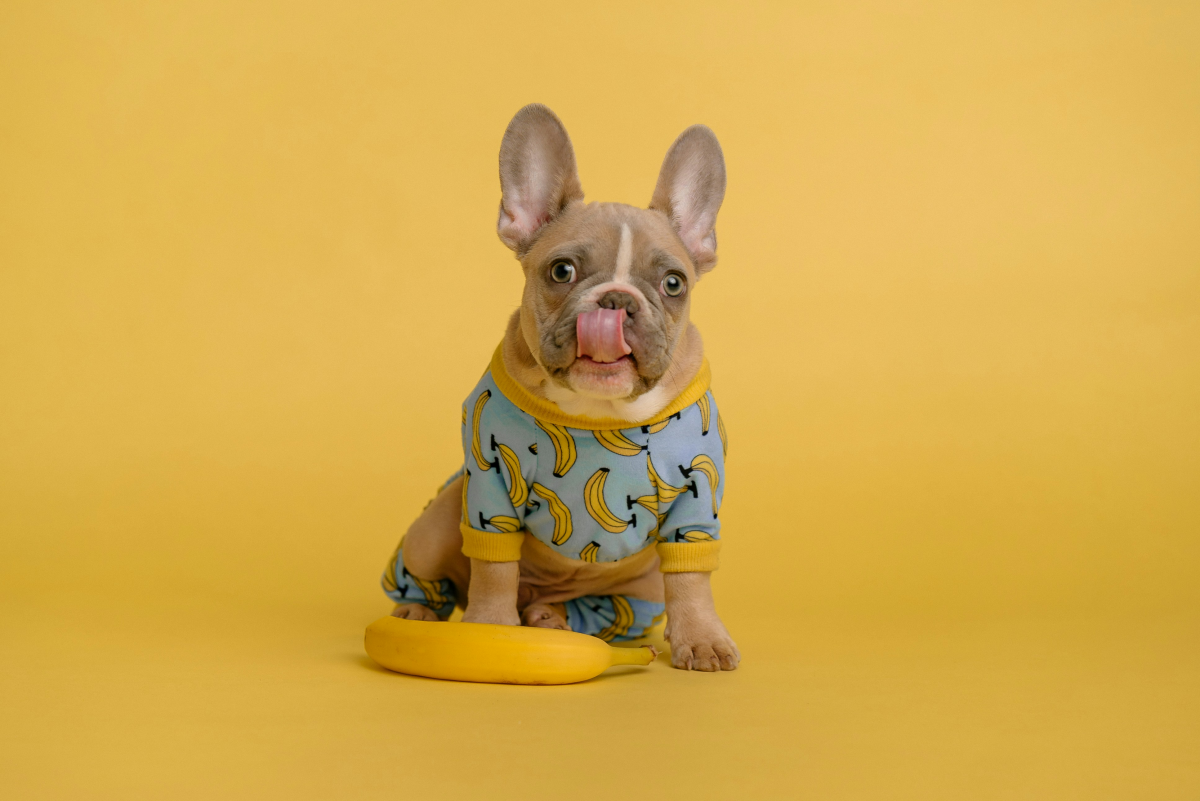
A quick word on hygiene, because everyone asks. A dog’s mouth has its own ecosystem of bacteria. While it’s mostly harmless to a healthy person, it’s definitely not sterile. The general advice is to avoid letting your dog lick open wounds or your mouth and nose. It’s just common-sense safety, especially around kids or anyone with a weaker immune system. A lick on the hand is usually fine—just wash up afterward.
How to Read the Lick: What Does It Mean?
The secret is to look at the context. The dog’s body language, the situation, and what they’re licking all tell part of the story. Here are the main types you’ll see.
The “I Love You” Lick
This is the one we all know and love. It usually happens when you get home or when you’re snuggled up on the couch. The key here is to look at the whole dog. Their body will be loose and relaxed, their eyes soft, and their tail might be giving a slow, sweeping wag. It’s a calm, connecting gesture that says, “I’m so glad you’re here.”
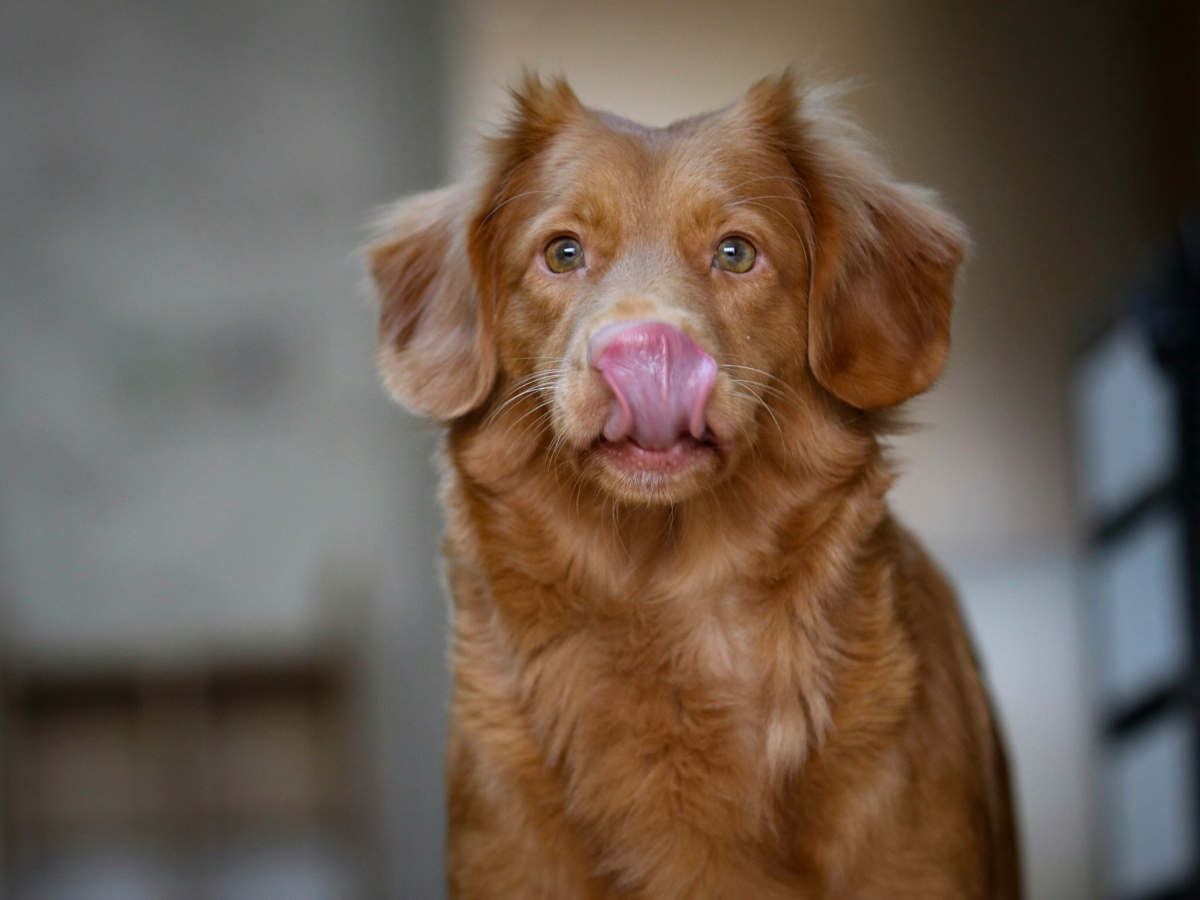
The “Please Don’t Be Mad” Lick
This one feels different. It’s often faster, almost frantic. The dog’s body might be lower to the ground, with their ears pinned back, and they might avoid looking you in the eye. You often see this when a dog feels unsure or thinks they’re in trouble. They’re saying, “I’m no threat, please don’t be upset.” It’s important not to mistake this for pure affection, because it’s a sign your dog is feeling anxious.
The “Pay Attention to Me!” Lick
Dogs are smart. If licking you gets a reaction—any reaction—they’ll do it again. I once worked with a family whose dog would lick their faces constantly while they watched TV. The owners would absentmindedly push the dog away, but for the dog, that push was attention! He learned that licking was a reliable button for getting physical contact.
By the way, if you’re dealing with this, here’s a super simple fix:
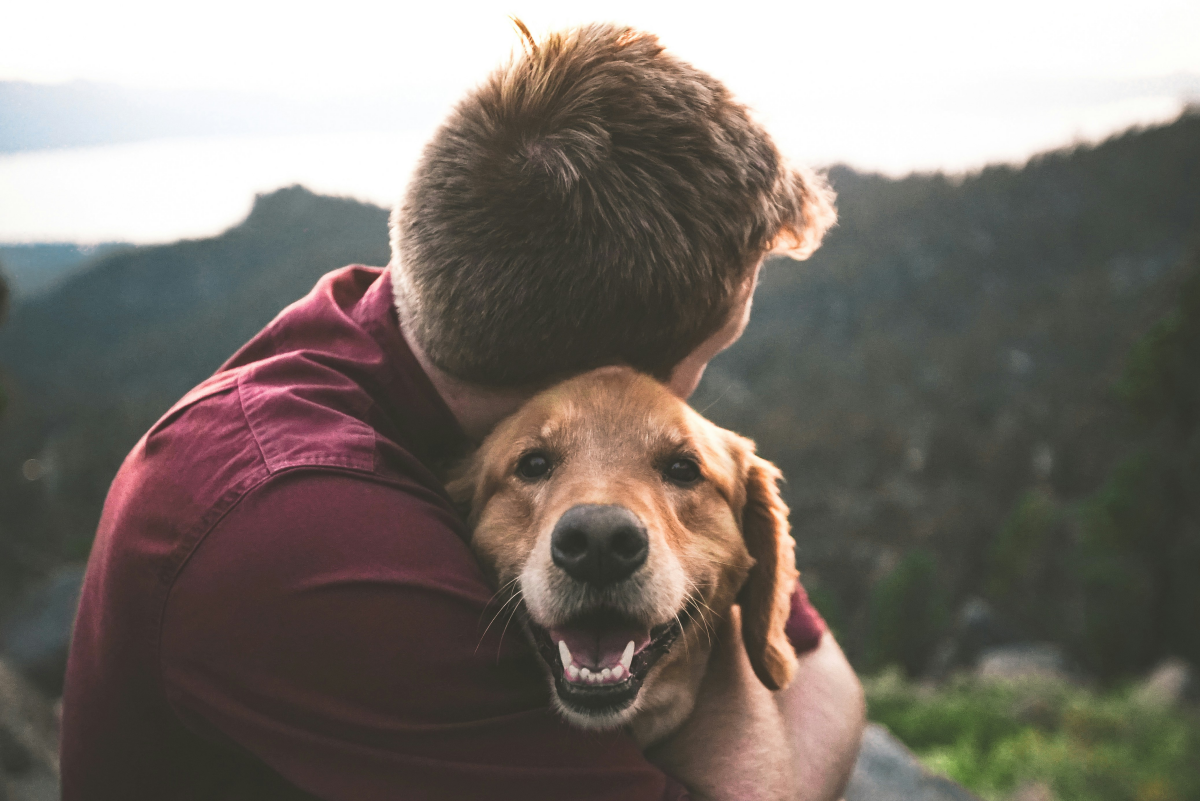
- Step 1: The second the annoying licking starts, say nothing. Don’t look at them, don’t touch them.
- Step 2: Simply stand up and walk out of the room for 30 seconds.
- Step 3: Come back in and act like nothing happened. They learn incredibly fast that licking makes their favorite human disappear.
The “Just Investigating” Lick
This is your dog’s way of reading the local news. They might lick a spot on the floor where another dog was, or lick the hand of a new person who comes over. They’re gathering data, not necessarily giving kisses. Allowing them to do a bit of this on walks is actually great mental enrichment!
When Licking Is a Red Flag
While most licking is harmless, it can sometimes be the first sign that something is wrong. Knowing when to worry is key.
Obsessive Licking on Themselves
If your dog is licking one spot on their body over and over, it’s a major red flag. This often happens on paws, legs, or near the tail.
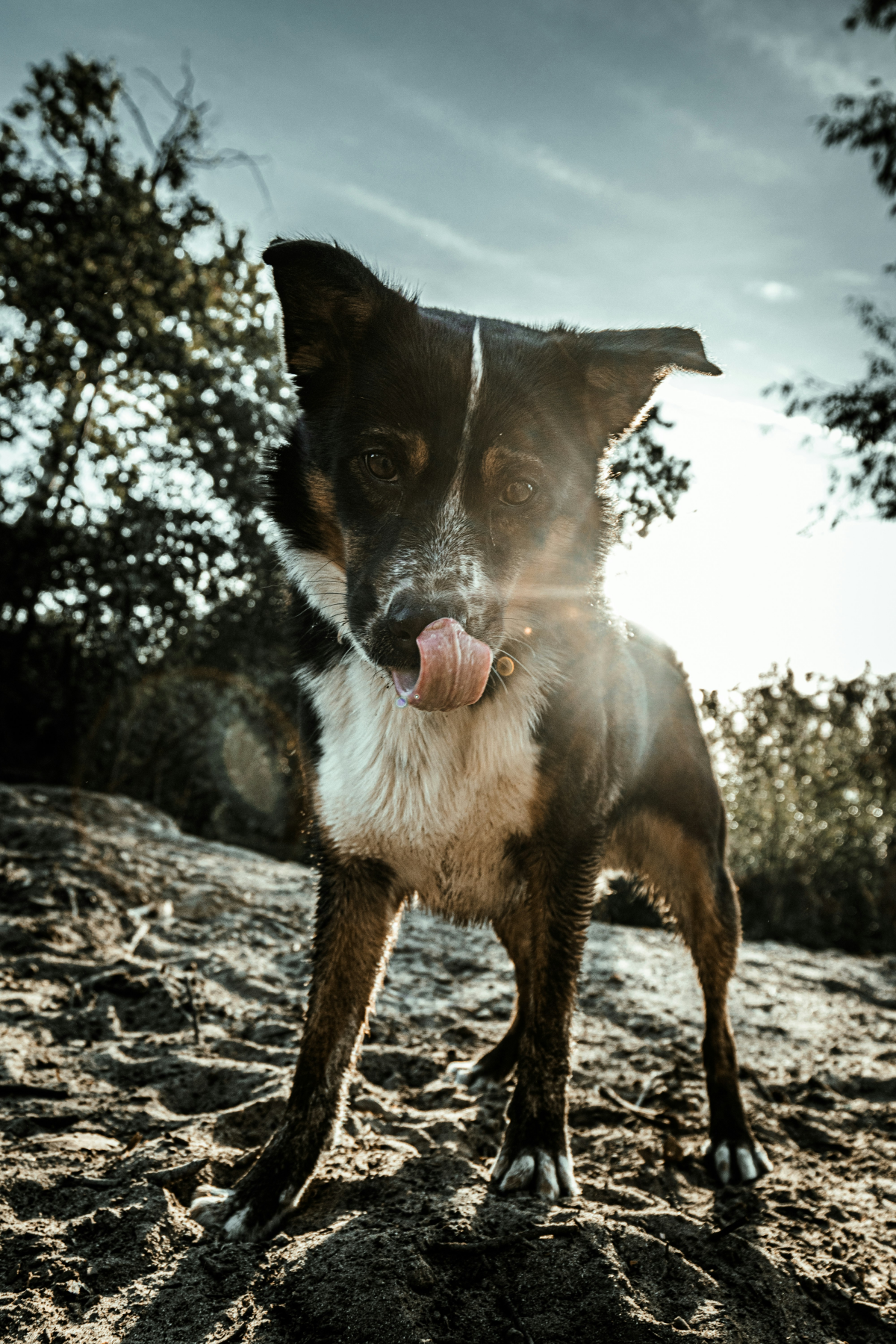
- It could be pain. A dog with an achy joint will often lick the area to soothe it. The licking provides a little temporary relief. Always check the area closely for thorns, cuts, or swelling.
- It’s very often allergies. This is a huge one. Environmental or food allergies can cause intense itching, especially on the feet. The dog licks to relieve the itch, but the moisture can cause secondary infections, which makes it even itchier. It’s a vicious cycle.
- It could become a serious skin lesion. Sometimes, obsessive licking (often sparked by boredom or anxiety) can create a thick, raw wound called an acral lick granuloma. These are nasty, hard to treat, and require a vet’s help.
Quick tip: If you see your dog focusing on one spot, part their fur and look at the skin. Is it red, swollen, or smelly? No matter what, this behavior is worth a call to your vet. It’s not something to ignore.
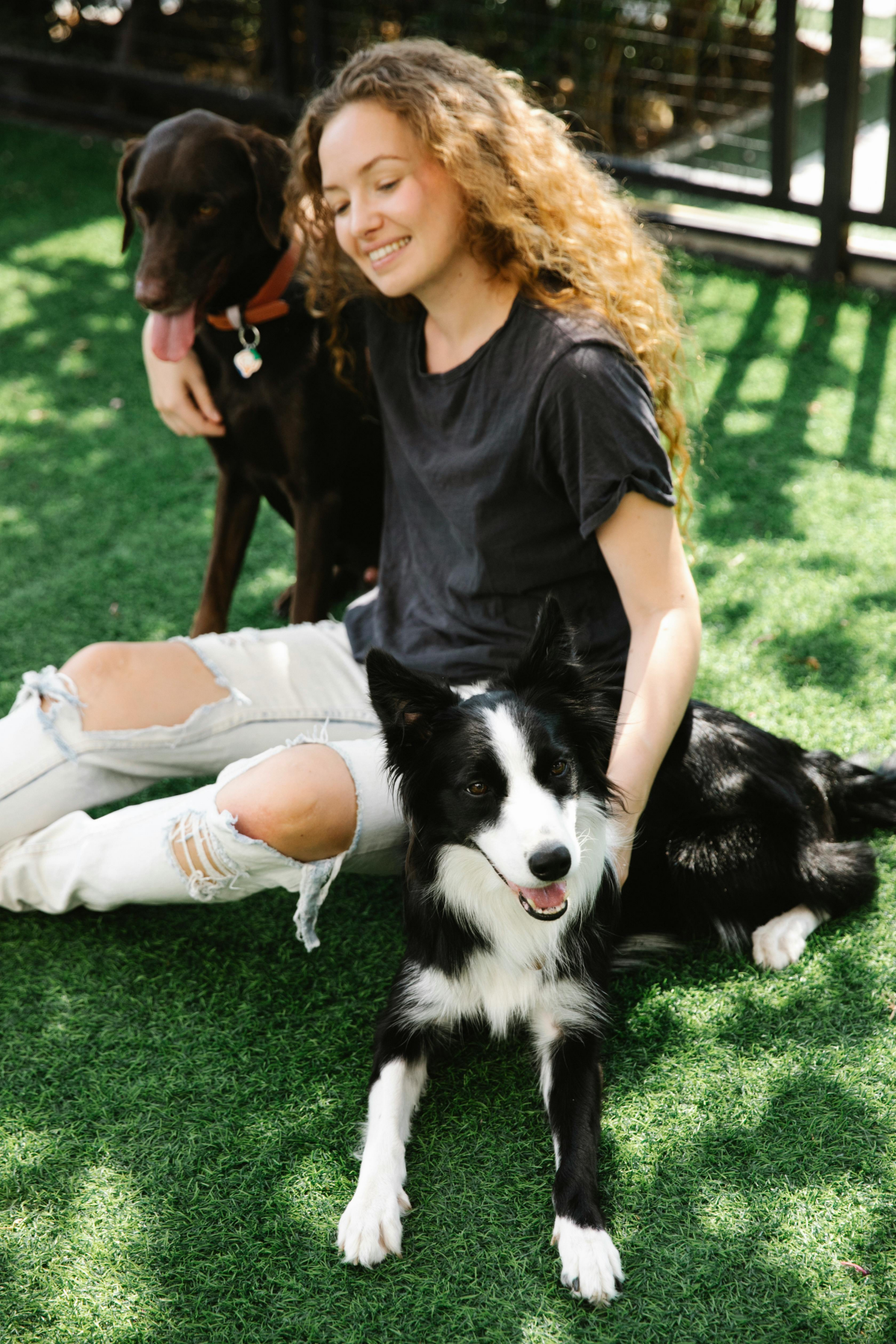
Heads Up! Common Mistakes to Avoid
When you see problem licking, it’s easy to do the wrong thing. Please avoid these:
- Don’t just assume it’s a bad habit. ALWAYS rule out a medical issue with a vet first. You can’t train away pain or an allergic reaction.
- Don’t punish the dog. Yelling at them or pushing them away will likely just increase their anxiety, which can make the licking even worse.
- Don’t use human lotions or creams. Many contain ingredients that are toxic to dogs if ingested (and they will lick it off).
Your Game Plan for Problem Licking
If you think your dog’s licking is over the top, here’s a step-by-step approach. Simply trying to stop the lick doesn’t work; you have to fix the reason why they’re doing it.
- Vet First, Always. This is non-negotiable. Be ready to tell your vet everything: when it started, what they lick, and how often. A standard vet consultation will likely run you between $60 and $100. If they suspect allergies, testing can range from $200 to $500, but it’s often worth it to get a real answer.
- Look at Their Lifestyle. If the vet gives a clean bill of health, it’s time to play detective. Is your dog bored? Stressed? Not getting enough exercise? Any recent changes at home? This is where a certified behavior consultant can be a huge help, though they can be pricey, often charging $100 to $300 an hour.
- Boost Their Enrichment. A happy dog is a busy dog. The goal is to give their brain a better job to do than licking.
- Try This Today: Instead of feeding your dog from a bowl, scatter their kibble in a snuffle mat or just in the grass. This five-minute activity works their brain and nose, which can dramatically reduce boredom.
- Invest in Puzzle Toys: These are lifesavers for bored dogs. You can’t go wrong with a classic KONG toy (around $15), a Nina Ottosson puzzle (usually $20-$30), or even just a rolled-up towel with treats inside for a free option.
- Redirect Calmly: When the licking starts, calmly interrupt and offer them something better to do, like a chew toy or a puzzle feeder.
- Call in the Big Guns. For true compulsive behavior, you may need a specialist. A board-certified veterinary behaviorist (DACVB) is a vet who can prescribe anti-anxiety medication. To be clear, medication isn’t a magic wand, but it can lower a dog’s stress enough for training and behavior modification to actually work. You can find a directory on the American College of Veterinary Behaviorists website, and for trainers, the Certification Council for Professional Dog Trainers (CCPDT) is a great resource.
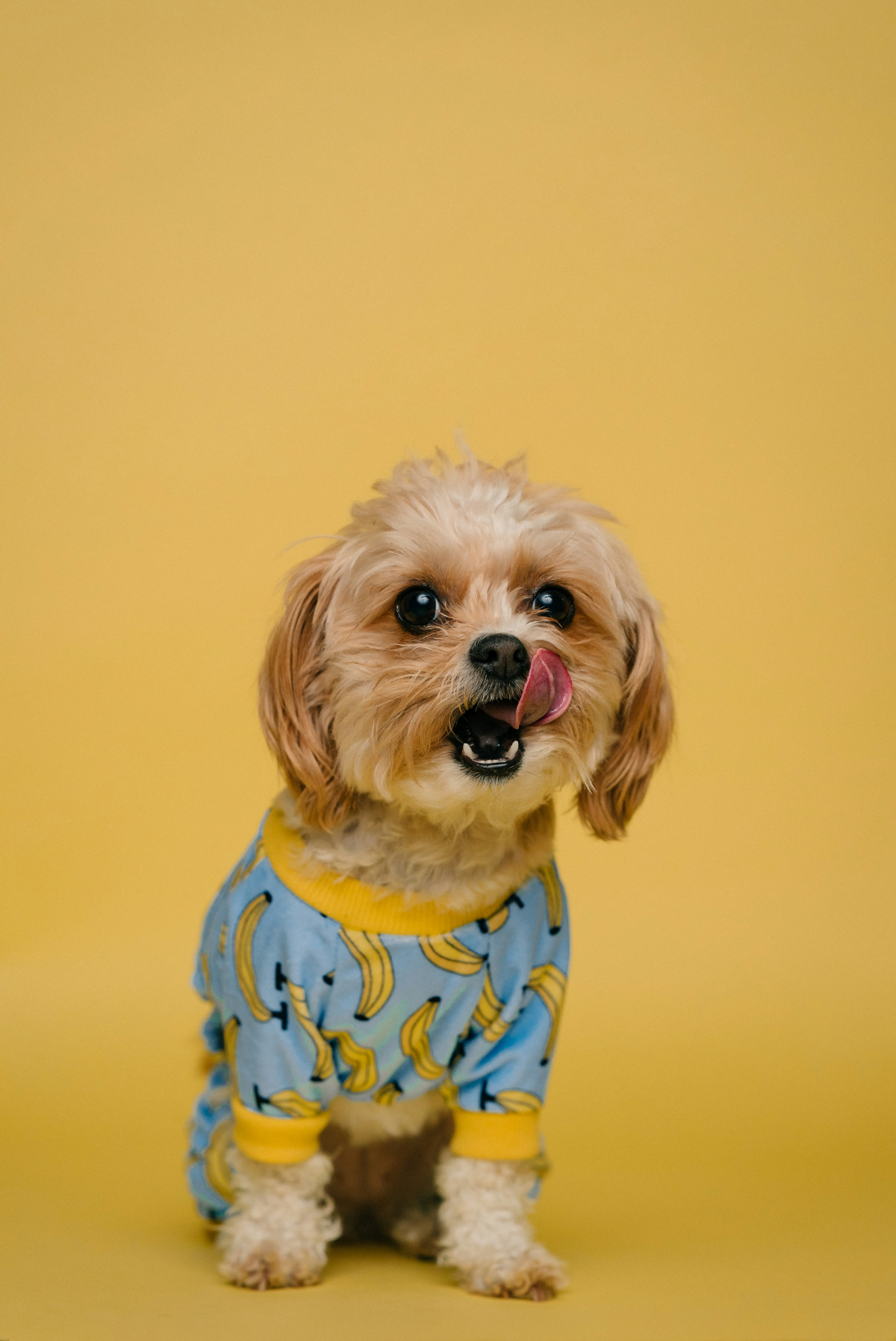
A Final Thought
At the end of the day, your dog’s lick is a conversation. Sometimes they’re whispering that they love you. Other times they’re asking for your attention. And, once in a while, they’re letting you know they need help. Your job is to learn how to listen.
So, pay attention to the context and their body language. Most of the time, that slobbery kiss is just a beautiful, simple sign of the bond you share. But if it feels like too much, trust your gut. Being an observant owner is the best gift you can give your dog.
Galerie d’inspiration
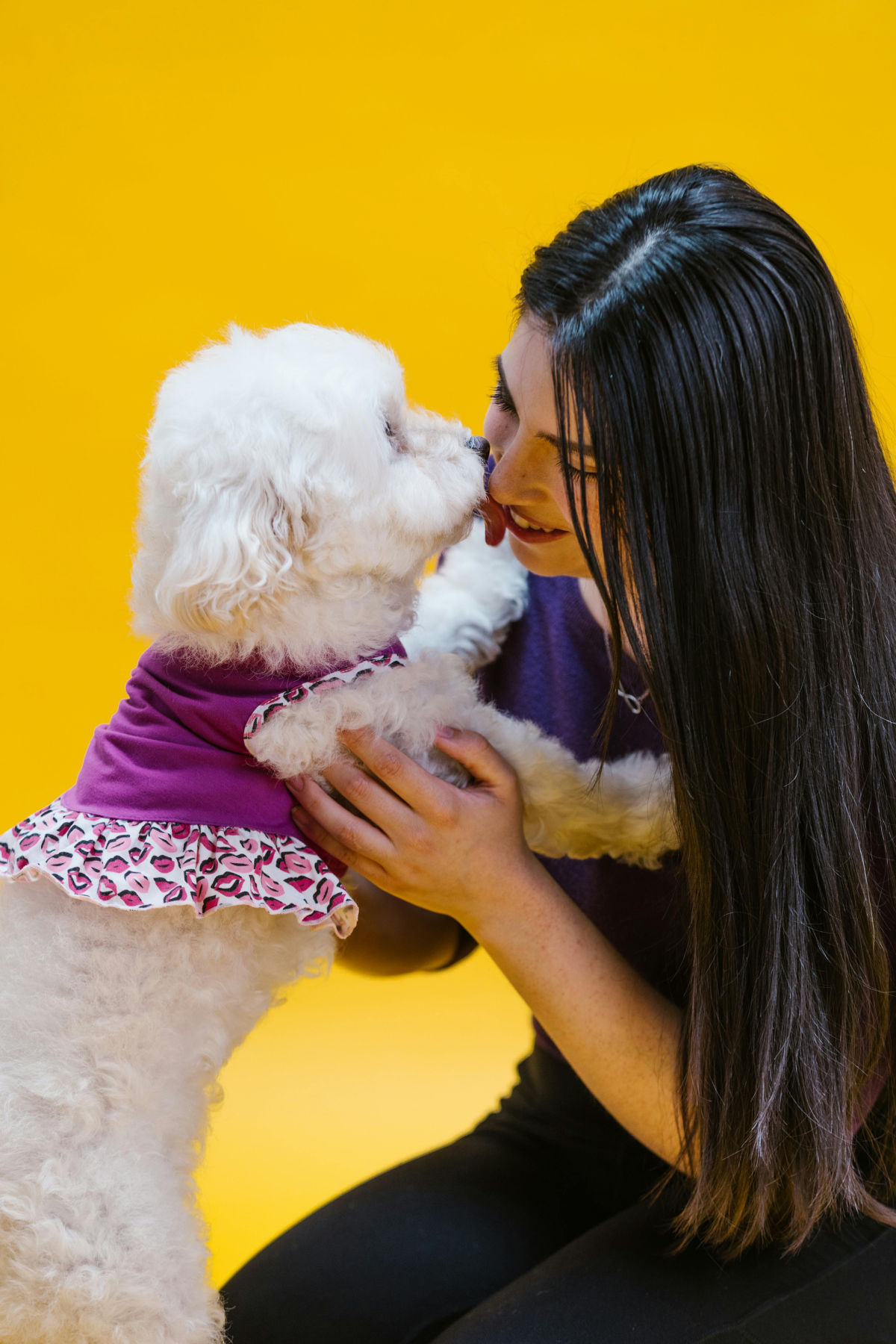
My dog’s licking seems excessive. Is it just a quirky habit or should I be worried?
The key is to observe the pattern and target of the licking. A relaxed, social lick is usually directed at you during a greeting or cuddle session. Problematic licking, however, is often repetitive, frantic, and focused on one spot. If they are licking their own paw or flank until it’s red, it could signal anything from allergies (a common culprit) to joint pain underneath. Obsessive licking of surfaces like floors or furniture, known as ELS (Excessive Licking of Surfaces), has been linked in studies to gastrointestinal issues. When in doubt, capturing a short video of the behavior to show your vet can be invaluable for getting to the root of the problem.










